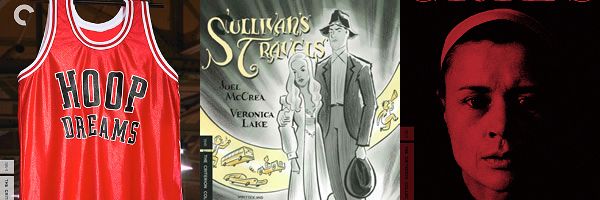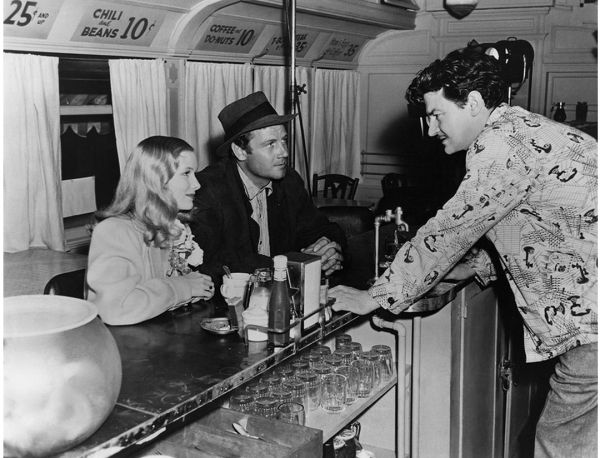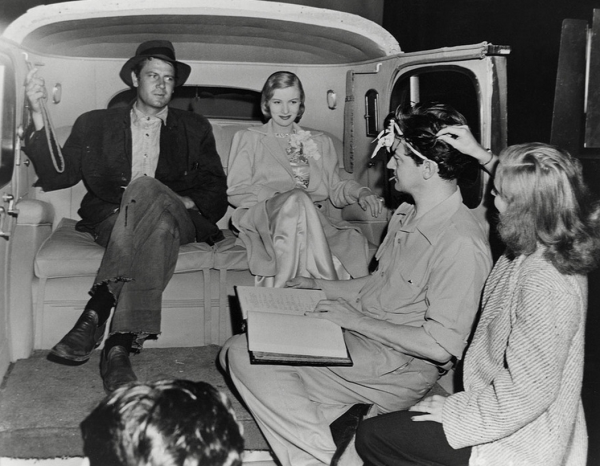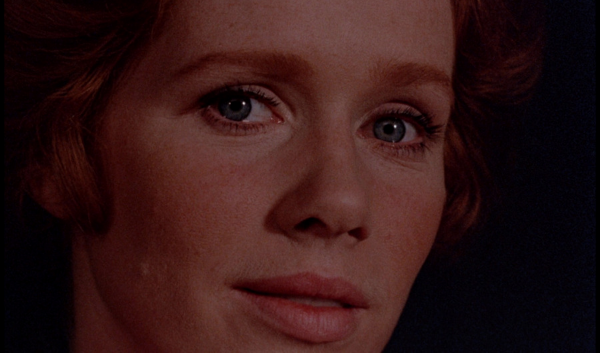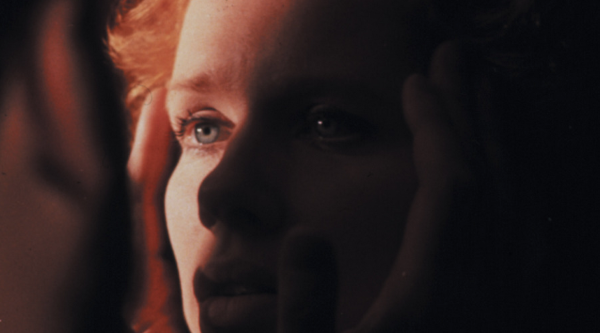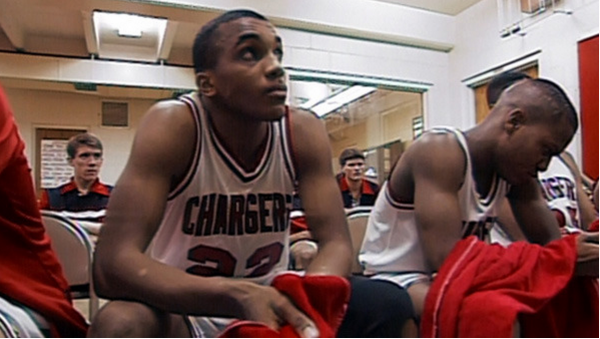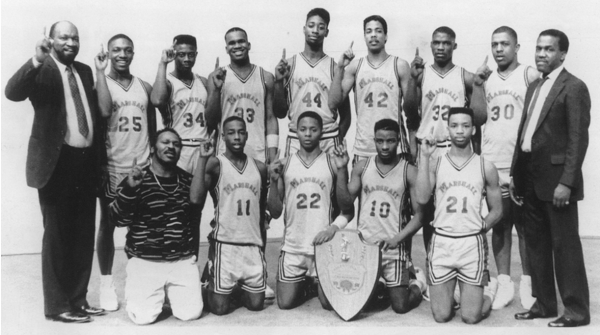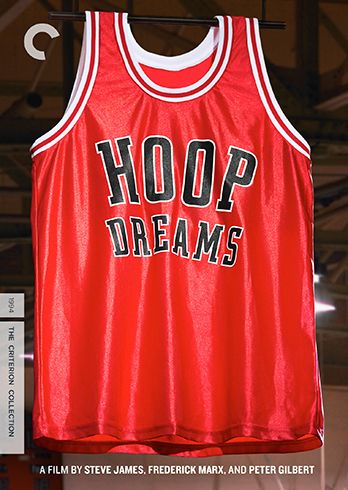The latest batch of Criterion films offers Preston Sturges screwball romp Sullivan’s Travels, Ingmar Bergman’s Cries and Whispers, and Steve James’s documentary Hoop Dreams and all could be called masterpieces, so it’s a strong showing.
Sullivan’s Travels starts with director John L. Sullivan (Joel McCrea) bemoaning that he’s been making frivolous films like “Ants in Your Plants of 1939,” and now wants to make important movies, something like an adaptation of the serious novel “O Brother Where Art Thou” (and yes, this is where Joel and Ethan Coen got the title for that movie). The studio bosses point out that John has had no experience with being destitute - he’s been pampered his whole life - and so John plots to become a man with only a dime in his pocket and only the clothes of what he assumes a homeless man would have. At first he’s sent out with a PR team that impede his ability to find the real heartache in the world, so he has to ditch them, but even on his own Sullivan keeps ending up back in Hollywood. There he meets a young woman (Veronica Lake), who buys him breakfast out of sympathy. He feels kindly to her, especially when she reveals her fortunes have turned and she’s about to give up on her Hollywood dreams. He takes one of his cars to get her homeward, but he’s then arrested by the cops and the jig is up: She finds out he’s a famous director, and also married to a woman who won’t grant him a divorce. She then convinces him that the only way he’ll survive out there, and get to experience the real world is if she tags along with him. But once he experiences the real world, it ends up being realer than he’d like.
Many consider this to be Sturges’s masterpiece, and rightly so (to be fair, I think his best film is The Lady Eve): it is a canonical work, and one of the best satires of Hollywood. Mostly the film is a class satire as a rich man attempts to experience the hard life and is thwarted by colds and his inability to blend in. Of course the reason why the film is effective is that eventually he does experience the terrible side of things, which leads to his big revelation: There’s joy in making something ephemeral, there’s pleasures to be had from escapism that are meaningful to those who escape. But along the way, the film is just a pleasure machine, with all of Sullivan’s side trips leading to delightful set pieces, from a car chase, to his stay with two older women who hope he’ll stick around for the night. Everything adds up to a classic comedy.
The Criterion Blu-ray improves on the previous DVD special edition, and replicates all of that film’s special features, while adding a little new material. The film is presented in its original aspect ratio (1.33:1) and in monaural LPCM 1.0. The picture quality is a marked improvement over the previous DVD editions, as the film got a new high definition remastering. Preston Sturges films were shot well, though it’s hard to say the look of his movies was the highlight (he’s a bit better than point and shoot, but). Or that is to say, the transfer is clean, but it’s no revelation because Sturges was no Erich von Stroheim.
Extras kick off with a commentary track by filmmakers Christopher Guest, Michael McKean, Noah Baumbach and Kenneth Bowser (the latter is the historian of the group). It’s a fun track, and it’s nice to hear that famous people are fans of the material, though it’s relatively light on insight – it’s more of a celebration of the greatness of the film and Sturges. More insightful is “Preston Sturges: The Rise and Fall of an American Dreamer” (75 min.), with comments from fans like Paul Schrader and friends and stars like Ceasar Romero and Eddie Bracken and his widow Sandy Sturges, it walks through his career in which he became one of the first writer/directors in Hollywood, and how he went from being one of the highest paid and in demand writers in Hollywood to his rapid descent into a string of flops that tanked his career. He led a very interesting life, the sort one would only see in his movies, so it’s a great documentary.
There’s also a 2001 interview with Sandy Sturges (13 min.) ported over from the previous release (though with new HD stills). Also ported over: Archival audio of Preston Sturges talking to Hedda Hopper (4 min.) reciting the poem “If I were a King” (1 min.) by Justin Huntly McCarthy, and singing “My Love” (2 min.), which he wrote. New for this release is the video essay “Ants in Your Plants of 1941” (17 min.) in which filmmakers David Cairns and Bill Forsyth appreciate both the film and its director.
Ingmar Bergman’s Cries and Whispers has long been revered as one of the director’s best. Entertainment Weekly once called it the greatest foreign film of all time. I can’t go that far. I prefer his earlier, funnier movies (and yes, he had an earlier funnier period with films like The Seventh Seal and Smiles from a Summer Night often funny), or his later more reflective films like Scenes from a Marriage and Fanny and Alexander. That said, Cries and Whispers is a meditative and searing portrait of death and the color red.
Whispers follows three sisters and their servant. Agnes (Harriet Andersson) is sick, and has been stuck in bed for days as the other three watch on, knowing that Agnes will likely die shortly. Karin (Ingrid Thulin) is the colder, more business-minded of the two sisters, while Maria (Liv Ullmann) is the seemingly nicer of them, though that’s partly an illusion. Also in the house is the servant Anna (Kari Sylwan), who has the best relationship with Agnes, and seems to care the most for her as well. As Agnes shuffles painfully off her mortal coil, the sisters look to their past and the unharmonious relationships with their husbands and their mother (Ulmann).
Bergman looks into the face of death with this film, and in doing so realizes that the darkness reflects back familial relations. In this stew of a film he touches on parents, sex, marriage, and childhood in a reflective, contemplative way as the film accepts that there is nothing that can be done for Agnes. It’s the sort of film that may also be more powerful on what you bring to it, what value you put into the film. It’s resonant work, and pretty much the definition of art cinema. It’s not easy lifting, but that’s likely to be expected, but it is also an experience.
Criterion’s new Blu-ray is also a better version of their previous DVD release and it presents the film in widescreen (1.66:1) and in both English and Swedish LPCM 1.0. I’m not a fan of dub tracks, so I didn’t bother listening to the English language version, but the fact that Criterion included it likely means it was done with some care. The film’s cinematography by Sven Nykvist won an academy award, and the new 2K digital restoration is phenomenal. The film is bathed in reds, and that used to be the color televisions had the greatest trouble with (in terms of color noise) so not only is this new transfer a revelation, it’s likely the first time home video has been able to replicate the theatrical look of the film without ruining the film.
Ported over from the previous release is “Ingmar Bergman: Reflections on Life, Death and Love with Erland Josephson” (52 min.), which has Bergman and star Erland Josephson sitting down for an interview in 1999 with journalist Malou von Sivers, and for those who assume Bergman was a Swedish monk or priest, this is definitely worth a look as it gets much more excited and salty than you might expect of the master. All the other supplements are new: There’s an introduction by Bergman (7 min.) from 2003, and a new interview with Harriet Andersson (20 min.) that was conducted in 2012, which suggests this special edition has been in the works for a while (or that they sat down with her to talk about a number of movies). There’s also on set footage (34 min.), which is silent so Peter Cowie provides a commentary track that talks about the making of the film and the film itself. “On Solace” (13 min.) is a visual essay done by ::kogonada that delves into the film’s tryptic structure. Also included is the film’s theatrical trailer.
Hoop Dreams is one of the greatest films ever made. Point blank, no question, which means it’s also one of the greatest documentaries ever made. The film follows Arthur Agee and William Gates, two kids from the Cabrini Greens projects in Chicago, who seem like promising young basketball players as they’re about to enter high school. Both boys are recruited to go to St. Joseph’s high school, which is famous for having produced Isiah Thomas, and both get scholarships. Gates joins the varsity team his freshman year, while Agee does not, and that may be why he only has a partial scholarship. When his parents can’t afford to keep him in private school, Agee goes back to public education. Gates looks to be a superstar, but – in a twist that would seem scripted if it wasn’t a documentary – he suffers from a knee injury that keeps him from winning state. Arthur’s family struggles, but as both head into senior year, it’s Agee and his public school team that could take it all the way.
As the film starts, both boys have dreams of being the next Isiah, the next Jordan, by the end of the film, both just want to get into college. The story of Hoop Dreams is the story of America, in that it’s about big dreamers, but also that we may be told we can be anything, the truth is often that you will never become a superstar and life is mostly about the small victories and using your gifts to get ahead. As is evident, the public school system did these boys no favors, and they are in no way ready for a real education when they show up for private school, so their challenges – on top of having a three hour commute – are very hard, while their home lives are challenging as well. Gates has a brother who almost made it, but who was also plagued with injuries and now has trouble keeping a job, while Arthur’s family is constantly suffering money troubles, and his father (who also thought he might be able to go pro) at one point becomes addicted to drugs.
The film is profound, and when people talk about poor or black people in a disparaging way, they would be well served to watch this movie to get a better sense of what it’s like to be on welfare or to see what it’s actually like to live in that world. The institution of America, the capitalist system turns these people into cogs, with so many of the youth chasing the unrealistic dream of being a star athlete, which makes sense as their schools aren’t able to give great educations. As the boys realize, using their basketball skills is almost the only way they can get a better life due to the education they receive from places like St. Joseph’s. This is one of the greatest films about the American dream ever made. And it’s also an interesting precursor to Boyhood in that what makes it so great is that we get to watch these boys turn into men.
Criterion’s Blu-ray presents the film in its original aspect ratio (1.33:1) and in 4.0 DTS-HD master audio. The film is presented in 1080i (not 1080p as is almost always the case with Blu-rays), a decision made because the film was shot on video tape, so the source material can only look so good. The picture quality gets slightly better as the film goes on, as the freshman year looks really rough, but perhaps that’s due to me visually adjusting to the film’s quality, or perhaps the filmmakers got slightly better equipment as the years went on.
This was previously released by Criterion, so most of the supplements are from that 2005 release. The film comes with two commentary tracks. The first is with writer/producer/director/editor Steve James, producer/cinematographer Peter Gilbert, and writer/producer/editor Fredrick Marx, and they speak of the challenges of making the film, knowing that taping certain events would make their subjects uncomfortable, about the challenges of getting involved with their subjects lives and if not helping would exploitative, or if it would be cheating if they interfered, and how so much of what happened felt like luck. The second is by Gates and Agee, and they talk about being subjects of the film but also what was going on in their head at the time (Gates reveals one time he limped off court he was faking), and what would have happened if they had played together. Made for this Blu-ray release is “Life After Hoop Dreams” (40 min.) which gets the filmmakers and the surviving Agee and Gates family members to update on what’s happened in their lives, and it notes a number of tragic passings in both families, but also what the two men are now up to in their middle age as it tracks them through 2014. The rest of the supplements are from the previous DVD release, with six clips from the Siskel & Ebert show (15 min.), which is great because the two really did help get the film on the map. It’s followed by seven additional scenes (21 min.) from the movie that offer more snippets from their lives. Rounding out the set are a music video and two trailers, and the trailers are fascinating as one is cut for the art school houses, and the other is cut for black audiences.

